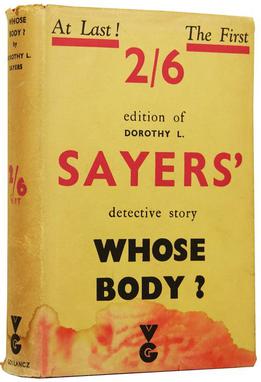
Whose Body? is a 1923 mystery novel by Dorothy L. Sayers first published in the UK by T. Fisher Unwin and in the US by Boni & Liveright. It was her debut novel, and the book in which she introduced the character of Lord Peter Wimsey. Clouds of Witness (1926) would be the next novel in which the character reappears.
Michael Francis Gilbert was an English solicitor and author of crime fiction.
Mr. Calder and Mr. Behrens are fictional counter-intelligence agents created by the British mystery and thriller writer Michael Gilbert. The characters appear in 24 short stories, most of which first appeared in either the British magazine Argosy or the American Ellery Queen's Mystery Magazine. The stories were collected in two anthologies, Game without Rules (1967) and Mr. Calder & Mr. Behrens (1982). One story, "Double, Double", was later republished in an Ellery Queen paperback. Many involve finding and dealing with British traitors or deeply embedded foreign agents; a few take place in Europe; one particularly grim one is set in World War II, during which Mr. Behrens is the bomb-maker in a failed attempt to assassinate Adolf Hitler. The characters also appeared in 16 BBC radio plays, largely based on the short stories.
Delano Ames was an American writer of detective stories. Ames was the author of some 20 books, many of them featuring a husband and wife detective team of amateurs named Dagobert and Jane Brown. A later series of novels involved a character named Juan Lorca, of the Spanish Civil Guard, who solved local mysteries.

The House of the Arrow is a 1924 mystery novel by the English novelist A. E. W. Mason, the third full-length novel featuring his recurring character Inspector Hanaud. It has inspired several films of the same title.
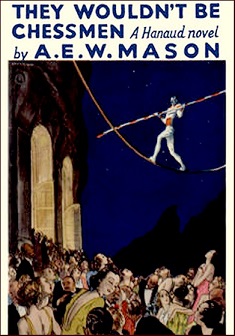
They Wouldn't Be Chessmen is a 1935 British detective novel by A.E.W. Mason. It is the fourth full-length novel in Mason's Inspector Hanaud series.
Patrick Petrella is a fictional police detective created by the British mystery writer Michael Gilbert who appears in ten books published between 1959 and 2003 and is probably the best-known of the half-dozen or so recurring characters that Gilbert wrote about throughout his long career. He is the protagonist of two novels and of 54 short stories that were first published in magazines and newspapers and then republished in eight collections of stories. In one of the short stories, however, "The Spoilers", in Game Without Rules, featuring Mr. Calder and Mr. Behrens as the protagonists, he appears only very briefly, at the end of the story. In his first appearance in a novel, the 1959 police procedural Blood and Judgement, Petrella is a "probationary" Detective Sergeant at the (fictional) Q Division of the London Metropolitan Police. By the final novel in the series, Roller Coaster, he has worked his way up to become a Superintendent.

Smallbone Deceased is a 1950 mystery novel by the English author Michael Gilbert, published in the United Kingdom by Hodder and Stoughton and in the United States by Harper & Brothers. A practising lawyer himself, Gilbert made the setting of the novel a London solicitor's office. The book was Gilbert's fourth novel and, like his three earlier ones, features Chief Inspector Hazlerigg. The novel was well-received and has regularly appeared in "Top 100" crime lists. Some critics consider it to be Gilbert's best work.

Close Quarters is the first novel by the British mystery writer Michael Gilbert. Published in England by Hodder and Stoughton in 1947, it did not appear in the United States until 1963. By then Gilbert's reputation had been firmly established in both countries and his regular American publisher for many years had been Harper & Brothers. Close Quarters, however, was published by Walker and Company, a less prestigious house. In it we are introduced to Chief Inspector Hazlerigg, who will go on to be a recurring character in a number of Gilbert's works throughout the next ten years. Gilbert, who was appointed CBE in 1980, was a founder-member of the British Crime Writers' Association. The Mystery Writers of America named him a Grand Master in 1988 and in 1990 he was presented Bouchercon's Lifetime Achievement Award.
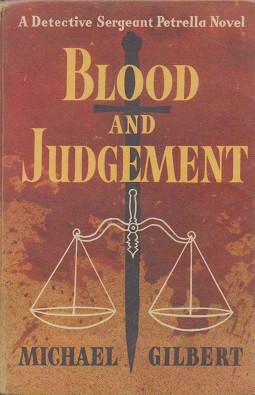
Blood and Judgement is a police procedural novel by the British author Michael Gilbert. Published in England in 1959 as Blood and Judgement by Hodder and Stoughton and in the United States as Blood and Judgment by Harper & Brothers, it was Gilbert's tenth novel. Gilbert, who was appointed CBE in 1980, was a founder-member of the British Crime Writers' Association. The Mystery Writers of America named him a Grand Master in 1988 and in 1990 he was presented Bouchercon's Lifetime Achievement Award. It introduces his most notable series character, Patrick Petrella, as a young and already somewhat controversial Detective Sergeant working out of the fictional Q Division of the Metropolitan Police Area.

Anything for a Quiet Life and Other New Mystery Stories is a collection of nine short stories by the British writer Michael Gilbert published in the United Kingdom by Hodder and Stoughton in 1990 and in the United States by Carroll & Graf the same year. Gilbert, who was appointed CBE in 1980, was a founder-member of the British Crime Writers' Association. The Mystery Writers of America named him a Grand Master in 1988 and in 1990 he was presented Bouchercon's Lifetime Achievement Award. All nine stories had previously appeared in Ellery Queen's Mystery Magazine. All of them take place in a fictional English coastal town called Shackleton-on-Sea that is situated in the south of England not far from Brighton and Hove. In spite of Gilbert's usual low-key urbanity in his style, a number of them have an unexpected grimness about them. "Michael was an exceptionally fine storyteller, but he's hard to classify," said one of his British publishers after his death. "He's not a hard-boiled writer in the classic sense, but there is a hard edge to him, a feeling within his work that not all of society is rational, that virtue is not always rewarded.".
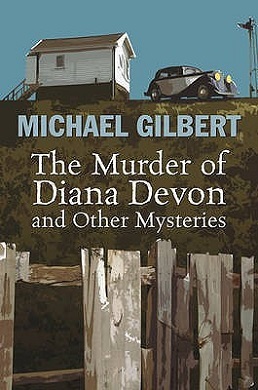
The Murder of Diana Devon and Other Mysteries is a collection of mystery stories and radio plays by the British thriller writer Michael Gilbert, first published in 2009 by the British company Robert Hale and unpublished in the United States. Gilbert, who was appointed CBE in 1980, was a founder-member of the British Crime Writers' Association. The Mystery Writers of America named him a Grand Master in 1988 and in 1990 he was presented Bouchercon's Lifetime Achievement Award. It contains 13 previously uncollected stories, as well as a poem and two unpublished radio plays featuring his characters Mr. Calder and Mr. Behrens. It has an introduction by John Cooper and an appendix listing all of the Calder and Behrens radio plays. At least two of the stories feature Superintendent Mahood, one of Gilbert's earlier recurring characters and who only appears in short stories.
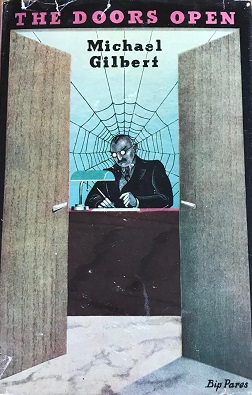
The Doors Open, published by Hodder and Stoughton in England in 1949 and by Walker and Company in the United States in 1962, is the third novel by the British mystery and thriller writer Michael Gilbert. Gilbert, who was appointed CBE in 1980, was a founder-member of the British Crime Writers' Association. The Mystery Writers of America named him a Grand Master in 1988 and in 1990 he was presented Bouchercon's Lifetime Achievement Award. Like his first two books, it features Inspector Hazlerigg, although not in a major role. It is, in fact, a very diffuse book in terms of its characters. Angus McMann, who was the chief protagonist of Gilbert's previous book, They Never Looked Inside, is briefly mentioned on the first page and makes a later appearance as a minor character. Hazlerigg does not appear until page 24 and thereafter only at intervals throughout the book. There are, in actuality, three other protagonists who, along with Hazlerigg, share the role of driving the narrative. One is Noel Anthony Pontarlier Rumbold ("Nap"), a junior solicitor in his father's London firm. Nap had spent four months on dangerous missions with the French maquis in occupied France during the war and is, apparently, still a Lieutenant-Colonel, D.S.O. A few years later he will be a main character in Gilbert's well-received novel Death Has Deep Roots. Patrick (Paddy) Yeatman-Carter, an acquaintance of Nap's, is another lead character, as is his uncle, Alfred Lord Cedarbrook, a man with an astonishing background, much sought after by both the Foreign Office and the War Office during WWII and now, apparently, still affiliated with the Secret Service. As well as being a linguist, explorer, soldier, and diplomat, he also has a law degree. All three of them, to one degree or another, carry out private investigations, sometimes with the backing of Hazlerigg, sometimes not.
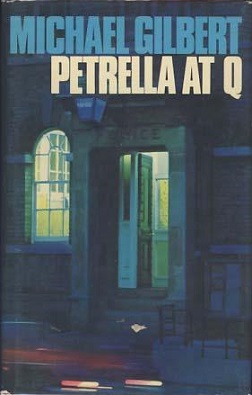
Petrella at Q is a collection of 11 short stories plus one longer story divided into four parts about the British policeman Patrick Petrella by the British writer Michael Gilbert published in the United Kingdom by Hodder and Stoughton in 1977 and in the United States by Harper & Row the same year. Gilbert, who was appointed CBE in 1980, was a founder-member of the British Crime Writers' Association. The Mystery Writers of America named him a Grand Master in 1988 and in 1990 he was presented Bouchercon's Lifetime Achievement Award. Many of the stories had previously appeared in such magazines as Reveille in the United Kingdom and Ellery Queen's Mystery Magazine in the United States. In addition to the stories themselves, there is an introductory sketch of Petrella by Gilbert written especially for this book. A second collection of stories, Young Petrella, was published ten years later, in 1987, but consisted exclusively of stories about Petrella's very first years on the force, when he began as a detective constable.
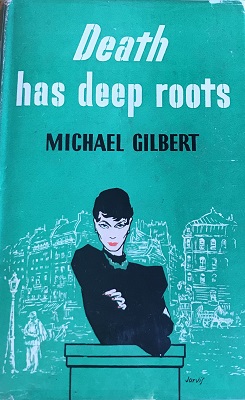
Death Has Deep Roots is the fifth novel by the British mystery writer Michael Gilbert. It was published in England by Hodder and Stoughton in 1951 and in the United States by Harper & Brothers in 1952. It is basically a classical courtroom trial story but with almost equally important thriller elements juxtaposed with the courtroom scenes. Although Inspector Hazlerigg, who had appeared in all of Gilbert's earlier novels as a mostly leading character, does play a role in this story, it is only in two brief appearances, once towards the beginning of the book and once again near the end. Two of the three main characters in this book are from previous novels, Major Angus McMann and Noel Anthony Pontarlier ("Nap") Rumbold. The other leading character, the trial barrister Hargest Macrae, also appears in some of Gilbert's early short stories.

Death in Captivity is a mystery novel by the British crime writer Michael Gilbert, first published in the United Kingdom in 1952 by Hodder and Stoughton and in the United States by Harper & Brothers as The Danger Within. It was Gilbert's sixth novel and, unlike his previous ones, does not feature Chief Inspector Hazlerigg in any way. Nor is it set in Gilbert's usual locales of London, the English countryside, or France. Instead, while it has many of the elements of the classic detective story, it is also a gripping novel of mounting suspense that takes place in a 1943 prisoner of war camp for British officers in northern Italy—it was the first of Gilbert's numerous later works that would feature suspense and danger as much or more as elements of detection. Gilbert himself had been a British officer during the war, was captured, and interned in an Italian camp. He escaped and spent several months making his way through the Italian countryside trying to reach the British lines. Much of this book apparently reflects his own experiences. It was the basis of a 1959 British film, Danger Within, that closely followed the events in the book. H.R.F. Keating, who wrote Gilbert's obituary for The Guardian, said that "Gilbert's time as a PoW prompted Death In Captivity (1952), surely the only whodunnit set in a prisoner-of-war camp."
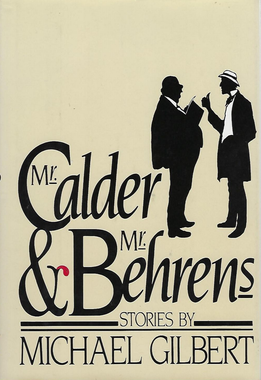
Mr. Calder and Mr. Behrens is a 1982 short story collection by the British crime and spy writer Michael Gilbert featuring his eponymous counter-intelligence agents. It was published by Hodder & Stoughton in the UK and by Harper & Row in the US. The book was Gilbert's second collection of Calder and Behrens stories, following Game Without Rules (1967).

The Affair at the Semiramis Hotel is a 1917 detective novella by the British writer A. E. W. Mason featuring his character Inspector Hanaud. Mason had originally written many of the plot elements for an abortive silent film, to be called The Carnival Ball. The novella appeared between Mason's first full-length Hanaud novel, At the Villa Rose (1910), and his second, The House of the Arrow (1934).

The Empty House is a novel of suspense by the British author Michael Gilbert published in England by Hodder and Stoughton in 1978 and in the United States by Harper & Row in 1979. It was Gilbert's 19th novel and does not fall into one neat category. Over his long career, Gilbert wrote many kinds of novels, from police procedurals to espionage thrillers, from courtroom dramas to chase and adventure, from cathedral and public school mysteries to tales of municipal corruption. Like the works of his near contemporaries Victor Canning and Ross Thomas, many of his works examined the amorality and sometimes lethal reactions of those in high government positions when confronted by events that run contrary to their wishes. The Empty House combines many of these elements in sometimes unexpected and startlingly violent ways.
















